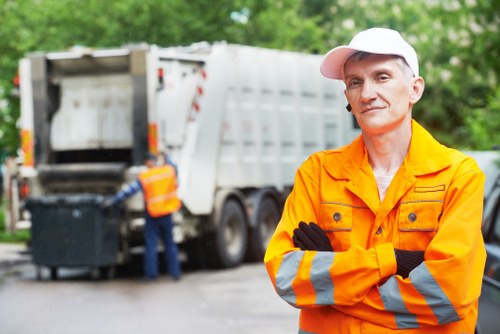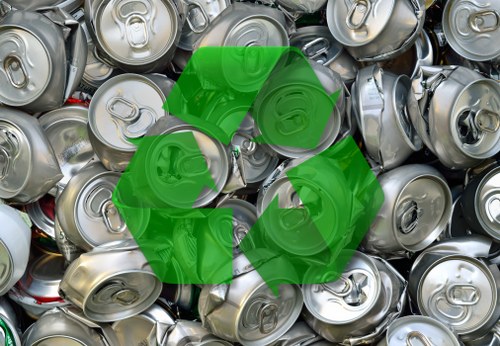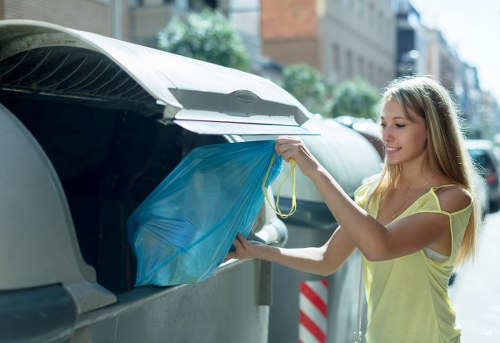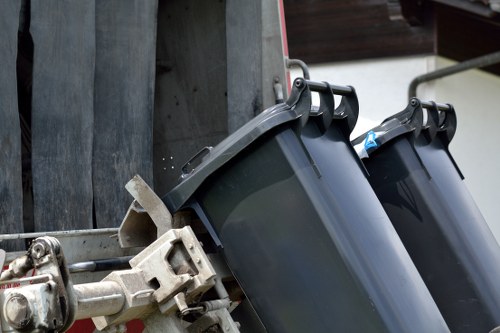Effective Construction Waste Clearance in Shoreditch

Shoreditch, with its vibrant community and bustling construction projects, often generates a significant amount of construction waste. Effective management of this waste is crucial not only for maintaining the aesthetic appeal of the area but also for adhering to environmental regulations. Construction waste clearance in Shoreditch plays a pivotal role in ensuring that building sites remain safe, clean, and compliant with local laws.
Waste from construction activities can range from broken concrete, discarded bricks, and excess materials to more hazardous substances like asbestos and lead-based paints. Proper clearance involves the systematic removal, sorting, and recycling or disposal of these materials.
Engaging professional services for construction waste clearance ensures that the process is handled efficiently and responsibly. These experts are equipped with the necessary tools and knowledge to manage different types of construction waste, minimizing the impact on the environment and the community.

Why Construction Waste Clearance is Essential in Shoreditch
Shoreditch is known for its dynamic growth and development, attracting numerous construction projects each year. With this growth comes the challenge of managing construction waste effectively.
Environmental Protection: Proper waste clearance helps in reducing landfill usage, conserving natural resources through recycling, and minimizing pollution.
Safety Compliance: Accumulated waste can pose safety hazards to workers and the public. Regular clearance ensures a safe working environment and complies with health and safety regulations.
Economic Benefits: Efficient waste management can lead to cost savings by optimizing resource use and avoiding potential fines for non-compliance with waste disposal regulations.

Types of Construction Waste
Understanding the different types of construction waste is the first step towards effective clearance. Common types include:
- Demolition Waste: Includes materials like bricks, concrete, wood, and metals from dismantled structures.
- Excavation Waste: Soil, rocks, and other materials dug up during the construction process.
- Masonry Waste: Debris from stone, brick, and concrete work.
- Hazardous Waste: Asbestos, lead, and other materials that require special handling and disposal.
- Salvageable Materials: Items like doors, windows, and fixtures that can be reused or recycled.
Each type of waste requires specific handling procedures to ensure safe and effective clearance.

Steps Involved in Construction Waste Clearance
Professional construction waste clearance services follow a structured approach to ensure thorough and efficient waste management.
1. Assessment and Planning
A detailed assessment of the construction site is conducted to identify the types and volumes of waste generated. Based on this assessment, a tailored waste management plan is developed.
2. Collection and Segregation
Waste materials are collected and segregated based on their type and recyclability. Hazardous waste is isolated and handled with extra precautions.
3. Transportation
Proper transportation methods are employed to move waste from the construction site to appropriate recycling centers or disposal facilities.
4. Recycling and Disposal
Recyclable materials are processed and reused, while non-recyclable waste is disposed of in compliance with local regulations.
5. Documentation
Comprehensive records of waste management activities are maintained to ensure compliance and accountability.

Benefits of Professional Waste Clearance Services
Hiring professional services for construction waste clearance in Shoreditch offers numerous advantages:
- Expertise: Professionals have the knowledge and experience to handle various types of waste safely and efficiently.
- Compliance: Ensures adherence to environmental regulations and waste disposal laws, avoiding potential fines and legal issues.
- Efficiency: Streamlines the waste management process, saving time and reducing disruptions to the construction schedule.
- Environmental Responsibility: Promotes sustainable practices through recycling and proper disposal of waste materials.
- Cost-Effectiveness: Optimizes resource use and reduces overall project costs related to waste management.
Choosing the right waste clearance service can significantly impact the success and sustainability of your construction project.

Choosing the Right Waste Clearance Partner in Shoreditch
Selecting a reliable and experienced waste clearance company is crucial for effective construction waste management. Consider the following factors when choosing a partner:
- Licensing and Certification: Ensure the company is licensed to handle and dispose of construction waste according to local regulations.
- Experience: Look for companies with a proven track record in construction waste clearance, particularly in Shoreditch.
- Comprehensive Services: Opt for services that offer end-to-end waste management solutions, including collection, segregation, transportation, and disposal.
- Environmental Commitment: Choose companies that prioritize recycling and sustainable disposal methods.
- Customer Reviews: Check testimonials and reviews to gauge the reliability and quality of the service provider.
Partnering with the right service ensures a smooth and compliant waste clearance process.

Cost Factors in Construction Waste Clearance
Understanding the cost components of construction waste clearance can help in budgeting and selecting the right service provider.
Key factors include the volume of waste, type of materials, distance to disposal sites, and the complexity of the waste management process. Additional services like hazardous waste handling or expedited clearance may incur extra costs.
It's advisable to obtain detailed quotes from multiple providers to compare services and pricing structures, ensuring you receive the best value for your investment.

Environmental Impact of Construction Waste
Construction waste, if not managed properly, can have severe environmental consequences. It contributes to landfill overflow, resource depletion, and pollution.
Landfill Overuse
The increasing volume of construction waste strains landfill capacities, leading to more land being used for disposal and potential environmental degradation.
Resource Depletion
Discarded materials represent lost opportunities for recycling and reuse, thereby increasing the demand for virgin resources and contributing to resource scarcity.
Pollution
Chemical pollutants from hazardous waste can contaminate soil and water sources, posing health risks to humans and wildlife.
Effective waste clearance mitigates these impacts by promoting recycling, conserving resources, and reducing pollution.

Innovative Solutions in Construction Waste Clearance
The waste management industry is continuously evolving, with new technologies and techniques enhancing the efficiency of construction waste clearance.
Recycling Technologies
Advanced recycling processes enable the transformation of construction waste into reusable materials, reducing the need for new resources.
Waste Tracking Systems
Digital tracking systems provide real-time data on waste generation, collection, and disposal, improving transparency and accountability.
Green Building Practices
Incorporating sustainable design and construction practices minimizes waste generation and promotes the use of eco-friendly materials.
Adopting these innovative solutions helps in achieving more effective and environmentally responsible waste management.

Case Studies: Successful Waste Clearance in Shoreditch
Examining successful waste clearance projects in Shoreditch provides valuable insights into best practices and effective strategies.
One notable project involved the renovation of a historic building, where meticulous waste management ensured the preservation of valuable materials and compliance with heritage conservation standards.
Another project focused on a large commercial development, utilizing advanced segregation and recycling techniques to minimize landfill contributions and promote sustainability.
These case studies highlight the importance of tailored waste clearance strategies in achieving project goals while maintaining environmental and regulatory standards.

Future Trends in Construction Waste Clearance
The construction industry is likely to see several emerging trends that will shape the future of waste clearance.
- Circular Economy: Emphasizing the reuse and recycling of materials to create a closed-loop system.
- Automation and AI: Leveraging technology to improve waste sorting, tracking, and management processes.
- Regulatory Changes: Increasingly stringent waste disposal regulations will drive the adoption of more efficient and sustainable practices.
- Green Certifications: Builders and developers will seek certifications that recognize sustainable waste management efforts.
Staying abreast of these trends ensures that construction waste clearance services remain effective and aligned with industry advancements.

How to Get Started with Construction Waste Clearance in Shoreditch
Initiating an effective waste clearance process involves several steps to ensure all requirements are met.
1. Evaluate Your Waste Generation
Assess the types and quantities of waste your project will produce. This evaluation helps in selecting the appropriate services and resources needed for clearance.
2. Select a Reputable Waste Clearance Service
Research and choose a waste clearance provider with expertise in construction waste management in Shoreditch. Consider their services, reputation, and compliance with regulations.
3. Develop a Waste Management Plan
Create a comprehensive plan outlining how waste will be collected, segregated, transported, and disposed of. This plan should align with project timelines and regulatory requirements.
4. Implement and Monitor
Execute the waste clearance plan, ensuring regular monitoring and adjustments as needed to maintain efficiency and compliance.
Starting with a structured approach guarantees effective waste management and contributes to the overall success of your construction project.

Conclusion
Construction waste clearance in Shoreditch is an essential aspect of property development and renovation. It ensures environmental sustainability, regulatory compliance, and the safety of both workers and the community.
By partnering with professional waste management services, developers can efficiently handle waste, reduce their environmental footprint, and contribute to the vibrant growth of Shoreditch.
Don't let construction waste hinder your project's success. Contact us today to book your construction waste clearance service and take a proactive step towards a cleaner, greener Shoreditch.